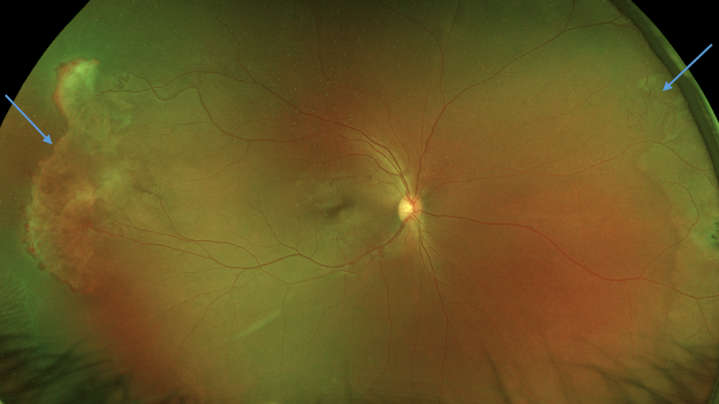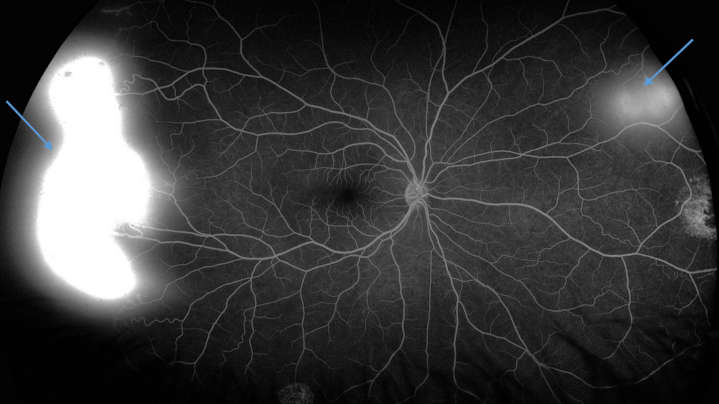Sickle Cell Retinopathy
The disease
Sickle cell retinopathy is an autosomal recessive genetic disorder resulting from a mutation of the gene coding for hemoglobin.
This disease can affect different organs including the eyes, which is affected at the retinal level giving the sickle cell retinopathy.
Diagnosis and follow-up
The diagnosis of sickle cell retinopathy is mainly ophthalmoscopic. Further investigations may be necessary to evaluate the severity of the retinopathy, such as OCT (optical coherence tomography), fluorescein angiography or even OCT angiography.


The formation of pathological retinal vessels is the main complication.
It is caused by chronic retinal ischemia. Once neovessels are present they can lead to a retinal detachment or a vitreous hemorrage.
Screening for sickle cell patients is therefore essential: it enables early detection, prevention of the possible complications and early treatment. This follow-up is carried out in the ophthalmology department of the intercommunal hospital of Créteil, in collaboration with the pediatric department.
